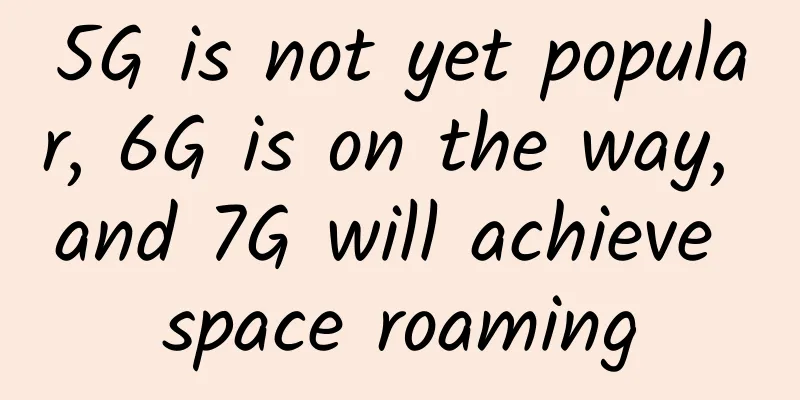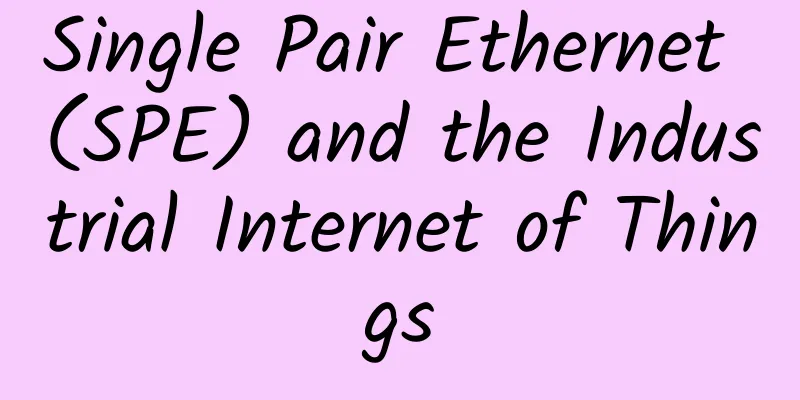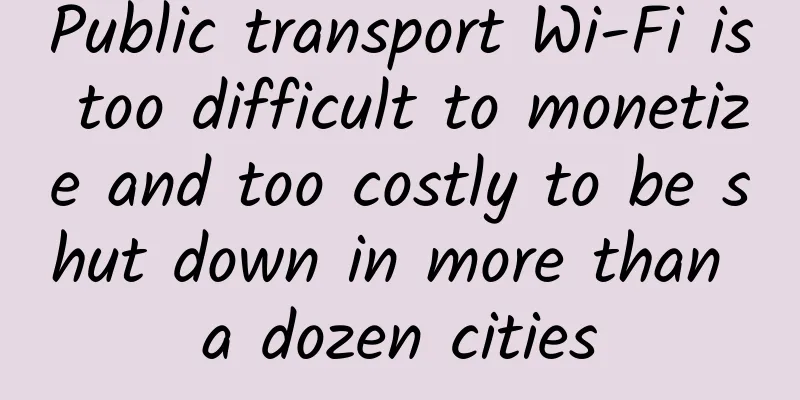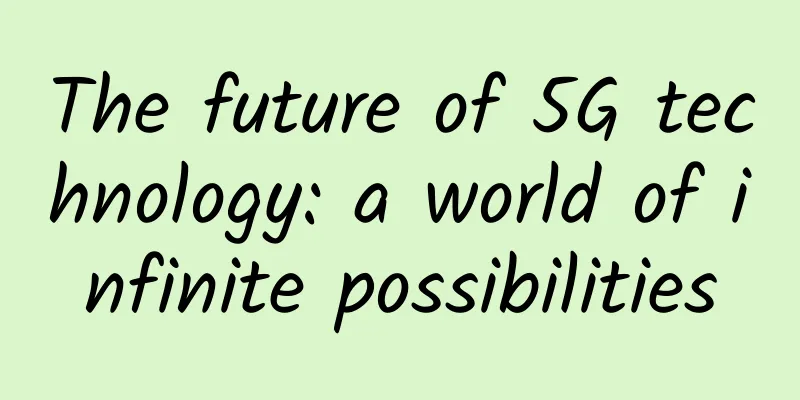5G is not yet popular, 6G is on the way, and 7G will achieve space roaming

|
This article is reprinted from the WeChat public account "悲了伤的白犀牛", written by 悲了伤的白犀牛. To reprint this article, please contact 悲了伤的白犀牛 public account. 6G will integrate satellite networks based on 5G to achieve global coverage. Its focus will no longer be on the most significant indicator of network upgrades in the past - "network speed", but on the means and scope of coverage. Today, let's talk about 6G. But before that, let's take a look at the current development status of 5G. On June 6th of last year, the Ministry of Industry and Information Technology issued 5G commercial licenses to the three major operators and China Radio and Television, and China officially entered the first year of 5G commercial use. One year later, have you used a 5G mobile phone? What is the different experience of 5G? Where is its use? For most people, the answer is: no, no, and I don't know. 5G is like a gorgeous crown for most people today. Everyone wants it, but after getting it, they will find that it is useless except that their necks feel heavy. The marginal benefits of increasing network speed are getting lower and lower. Even if 5G is faster, at most it can save a few seconds of buffering video, which cannot bring about a qualitative improvement in experience. Instead, it costs a lot more money. On the other hand, the 5G module is a great test for the battery life of mobile phones. All 5G flagships have increased the battery capacity. So there is a very strange phenomenon: many people bought 5G mobile phones but used 4G packages, and even chose to turn off 5G to improve the network experience because of battery life anxiety and imperfect signal coverage. In fact, 5G is far from being popular today. I believe that 5G will not be truly popular until around 2030, and the peak of 5G data traffic will occur around 2040. After that, we will need to consider upgrading the network (6G) to meet new requirements. Therefore, 6G may not be put into use until 20 years later, but this does not prevent researchers from conducting research on it, because any mainstream technology is not built on castles in the air, but must be rooted in the in-depth research and evolution of the previous generation of networks, and on this basis, expand and innovate the technical path. What kind of network will 6G be? If 4G mainly connects people with people and partially connects people with things, and 5G connects people with people, people with things, and things with things, then 6G will most likely connect people with the earth from a higher level. The difference is that 4G and 5G are more about point-to-point connections, while 6G may connect a certain area or even the entire earth as a whole (it feels a bit like blockchain). On this point, Neil McRae, chief network architect of British Telecom Group, elaborated in more depth: "6G will be '5G+satellite network (communication, telemetry, navigation)', with features including ultra-fast broadband using 'wireless fiber' technology." Specifically, 6G will integrate satellite networks on the basis of 5G to achieve global coverage. The focus is no longer on the most significant indicator of network upgrades in the past - "network speed", but on the means and scope of coverage. This means that the speed of 6G will basically remain the same as that of 5G (downlink about 10Gb/s). The 6G system will integrate telecommunications satellite networks, earth remote sensing imaging satellite networks, and navigation satellite networks to provide users with network positioning identification, multimedia and Internet access, weather information and other services. Another feature of 6G is "nano-antennas", and its base stations can be almost everywhere. Come, imagine that in the future you want to call someone. Through the 6G network, you can achieve highly restored face-to-face communication. No matter the other party is on a small road in the suburbs or in a dark movie theater, you can not only see the other party, but even feel the changes in the environment where the other party is. If necessary, you can check the situation within a few hundred meters around the other party, such as whether there are any dangerous factors approaching. Of course, ordinary users may be more concerned about another issue - charges. You can rest assured that based on past experience with network upgrades, the more the network is upgraded, the lower the unit price of the charges. In the 6G era, if the traffic is still measured in MB, the price will be so low that it can be ignored. By then, the traffic price will most likely be measured in TB. It is worth pointing out that the current evolution of mobile networks actually has a theoretical ceiling. For example, the channel has a limit on the speed of information transmission. If future network evolution is still based on Shannon's theorem, the network speed will soon enter the limit range. This means that if our future mobile networks are to achieve substantial development, we need to achieve breakthroughs in basic theory. By the way, not only 6G, but 7G is also under research. It is said that 7G is mainly to solve the problem of space roaming. Is it the first thing that comes to your mind to make a phone call with aliens? Haha, you may be overthinking. According to the current plan, the space roaming achieved by 7G only refers to switching and roaming on different satellite systems (US GPS, China Beidou, Russia GLONASS). |
<<: Introduction to the complete 5G system
>>: Let's talk about 11 main neural network structures
Recommend
Overview of 5G development plans for the country and provinces and cities in 2021
As an important carrier for the development of th...
KubeDL joins CNCF Sandbox to accelerate the cloud nativeization of AI industry
On June 23, 2021, the Cloud Native Computing Foun...
Hosteons 5th Anniversary Double Traffic for All VPS Hosts, VPS Hosts Annual Payment of $16, 5 Data Centers in Los Angeles/Dallas
Hosteons is currently running a 5th anniversary p...
80VPS new platform Los Angeles Cera data center (China Unicom CUVIP line) KVM simple test
Some time ago, I shared the news of 80VPS's n...
10% off on all CMIVPS VPS, starting from $2/month for Hong Kong CN2 line, starting from $16/quarter for Seattle VPS Sparta
CMIVPS sent a 10% discount code for all VPS, incl...
The key to moving towards multi-cloud is management tools
Now it has become a consensus that enterprises sh...
Experts discuss: How will 5G accelerate after the epidemic?
It was supposed to be a time to get rid of the ol...
To promote cooperative learning teaching practice, the 4th National Cooperative Learning Seminar opened
On December 4, the 2019 Fourth National Seminar o...
IoT Observation: Seven benefits of LoRaWAN technology application in one article
IoT connection environment In addition to smart h...
Without 5G performance guarantees, can operators fully exploit this opportunity?
Private 5G networks are attractive to the largest...
The operators’ 5G investment budget has been determined. From construction to application, what other challenges are there to overcome?
According to statistics from China News Service, ...
How Amazon can achieve continuous delivery
I went to a large domestic e-commerce company for...
Across four districts in Beijing, we tested whether the "network speed reduction" is true
Recently, a piece of news about the slowdown of d...
How far will eSIM cards go in 2018?
The eSIM card was mentioned as early as 2011. The...
ATCLOUD: $3/month KVM-1GB/20GB/1TB/USA, UK, Singapore, Germany, France, etc.
ATCLOUD is a foreign hosting company founded in 2...









